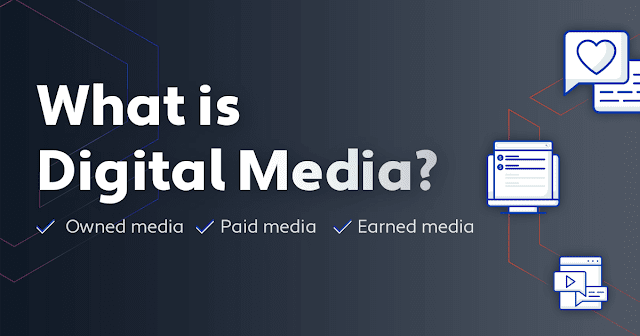Digital media refers to the online space on an electronic device to create, distribute, view and store the content encrypted through a machine-readable platform.
The advent of digital media and the dependence on it has increased over the last few years. For many, the news source is digital news platforms, and less on television. Users engage and communicate through the tech-enabled media for their businesses as well. Digital media refers to the online space on an electronic device to create, distribute, view and store the content encrypted through a machine-readable platform.
There is a blend of digital media products being offered with a variety of skills. Its effects can be discovered in the video, animation, eCommerce, websites, mobile applications, data visualisation, and interactive storytelling. At the same time, the industries include Television, Government, Sports, Health, Education, Marketing and advertising, Environment and others.
The emphasis lies on multi-skilled groups, engaging with various modern, creative business processes, and making digital media products that deliver value for people. The government uses digital media to post general information on its handles to share with the public.
For instance, the White House posts information on its website or through different ways such as social media accounts, various news articles or television broadcasts. Similarly, the Indian government’s Press Information Bureau (PIB) also releases notifications from different departments.
Companies have more control over digital media and can share or alter information accordingly. For instance, if a company prints an advertisement in the newspaper, they can’t make modifications once it has gone to press for publishing. However, if it procured an online ad, it can contact its advertising department and have them withdraw the ad, including making suitable changes and sending it back.
The following are the types of digital media:
- Owned media: It is an online asset that one monitors. It gives uniqueness to the brand. Digital media platforms comprise websites, social media channels, blogs, videos and others. Now, one can quickly write blogs and make videos passionately to enhance the skills. If one optimises the owned media for Search Engine Optimisation (SEO), the business will display when prospective clients search for topics that matter to what the person provides. It improves the visibility of the business. Owned media allows aspiring people to showcase their talent in a particular industry. Consistency has to be maintained so that it maximises the growth of the business.
- Earned Digital Media: The customers generate the advertising when they are vocal about the brand through word of mouth, social media, feedback, testimonials, shares, and re-posts. It is the best form of promotion a business can have as it lowers customer acquisition costs and leads the way to growth. It needs strict supervision on a day-to-day basis, unlike owned digital media. Top organic rankings on search engines and high-quality content drive the earned digital media.
- Paid Digital Media: It encourages online content to enhance traffic to owned media assets. This form of media comprises PPC, paid search ads, display ads and Facebook ads. A good marketing agency can use paid media and plan PPC management to enable the right customers to reach the website.





